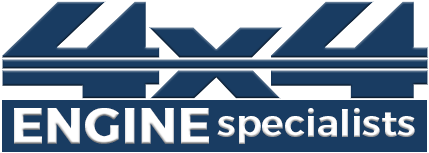Reconditioning Range Rover engines is a meticulous process that ensures these high-performance vehicles maintain their reliability and longevity. This procedure is essential for car enthusiasts and everyday users who want to extend the life of their Range Rover without the expense of a brand-new engine. Reconditioning not only restores an engine’s functionality but also enhances its performance, making it a cost-effective and environmentally friendly alternative to replacement. We will delve into the detailed steps of the reconditioning process, highlighting each critical stage to provide a thorough understanding of what it entails.
Initial Assessment and Diagnosis
The first step in reconditioning Range Rover engines is the initial assessment and diagnosis. This phase involves a thorough inspection of the engine to identify any issues or wear and tear. Experienced mechanics use advanced diagnostic tools to scan the engine for faults and assess its overall condition. Key areas of focus include the cylinder heads, crankshaft, camshaft, and pistons. A detailed report is generated, outlining the necessary repairs and replacements. This diagnostic step is crucial as it sets the foundation for the entire reconditioning process, ensuring that all issues are identified and addressed.
Disassembly of the Engine
Once the initial assessment is complete, the next step is the disassembly of the engine. This process involves carefully taking apart the engine, piece by piece. Every component, from the smallest bolt to the largest part, is meticulously removed and inspected. This step is labor-intensive and requires precision to avoid damaging any parts. The disassembly allows mechanics to clean each component thoroughly and check for any signs of wear, cracks, or other damage. By dismantling the engine completely, technicians can ensure that every part is evaluated for its condition and suitability for reuse.
Cleaning and Inspection of Components
After disassembly, the individual components undergo a rigorous cleaning process. Specialized cleaning solutions and equipment are used to remove oil, grime, and carbon deposits from each part. Ultrasonic cleaning machines may be employed for intricate components to ensure every nook and cranny is spotless. Following the cleaning, a detailed inspection is carried out. Components are measured for wear and compared against factory specifications to determine if they meet the required standards. Any parts that do not meet these standards are either repaired or replaced. This step ensures that only the best quality parts are used in the reconditioning process.
Repair and Replacement of Worn Parts
With the components cleaned and inspected, the next stage involves the repair and replacement of worn or damaged parts. Skilled technicians use precision tools and machinery to restore parts to their original specifications. This may include machining the cylinder heads, grinding the crankshaft, and replacing piston rings and bearings. In cases where parts are beyond repair, new OEM (Original Equipment Manufacturer) parts are sourced and installed. This ensures that the reconditioned range rover engine meets or exceeds the performance standards of a new engine. The repair and replacement process is critical for achieving optimal engine performance and reliability.
Reassembly of the Engine
The reassembly of the engine is a meticulous process that requires expert knowledge and precision. Each component is carefully reinstalled in the correct sequence, ensuring all parts fit together perfectly. Lubricants and sealants are applied where necessary to ensure smooth operation and prevent leaks. Torque specifications are followed rigorously to ensure that bolts and fasteners are tightened correctly. The reassembly process is like putting together a complex puzzle, where every piece must be placed accurately to ensure the engine functions correctly. This stage is vital for the overall reliability and performance of the reconditioned engine.
Testing and Calibration
Once the engine is reassembled, it undergoes a series of tests and calibrations to ensure it performs optimally. Dyno testing is commonly used to simulate real-world driving conditions and measure the engine’s performance. This includes checking for power output, torque, and fuel efficiency. Any deviations from expected performance are addressed by making necessary adjustments. Additionally, computerized diagnostic tools are used to fine-tune the engine’s electronic systems, ensuring everything from fuel injection to ignition timing is perfectly calibrated. This thorough testing phase ensures that the reconditioned engine is ready for reliable use.
Quality Control and Certification
Quality control is a critical aspect of the reconditioning process. After testing and calibration, the engine undergoes a final inspection to ensure it meets all required standards. This includes checking for any leaks, abnormal noises, or other issues that could affect performance. Once the engine passes this rigorous quality control process, it is certified as reconditioned. Certification provides assurance to the customer that the engine has been restored to the highest standards of quality and reliability. This step is essential for building trust and confidence in the reconditioned engine.
Installation and Final Checks
The final step in the reconditioning process is the installation of the reconditioned engine into the vehicle. This involves carefully fitting the engine back into the Range Rover and connecting all necessary components, such as the transmission, exhaust system, and electrical systems. Once installed, the engine is subjected to a series of final checks to ensure everything is functioning correctly. This includes checking for any leaks, verifying the correct operation of all systems, and conducting a test drive. The final checks ensure that the reconditioned engine operates smoothly and reliably, ready to provide many more years of service.
Conclusion
Reconditioning a Range Rover Engines is a comprehensive and detailed process that restores the engine to its optimal performance. From the initial assessment and disassembly to the final installation and checks, each step is meticulously carried out to ensure the highest standards of quality and reliability. This process not only extends the life of the engine but also enhances its performance, making it a cost-effective and sustainable alternative to engine replacement. For Range Rover owners, understanding the reconditioning process provides peace of mind, knowing that their vehicle’s heart is restored to its best possible condition.


